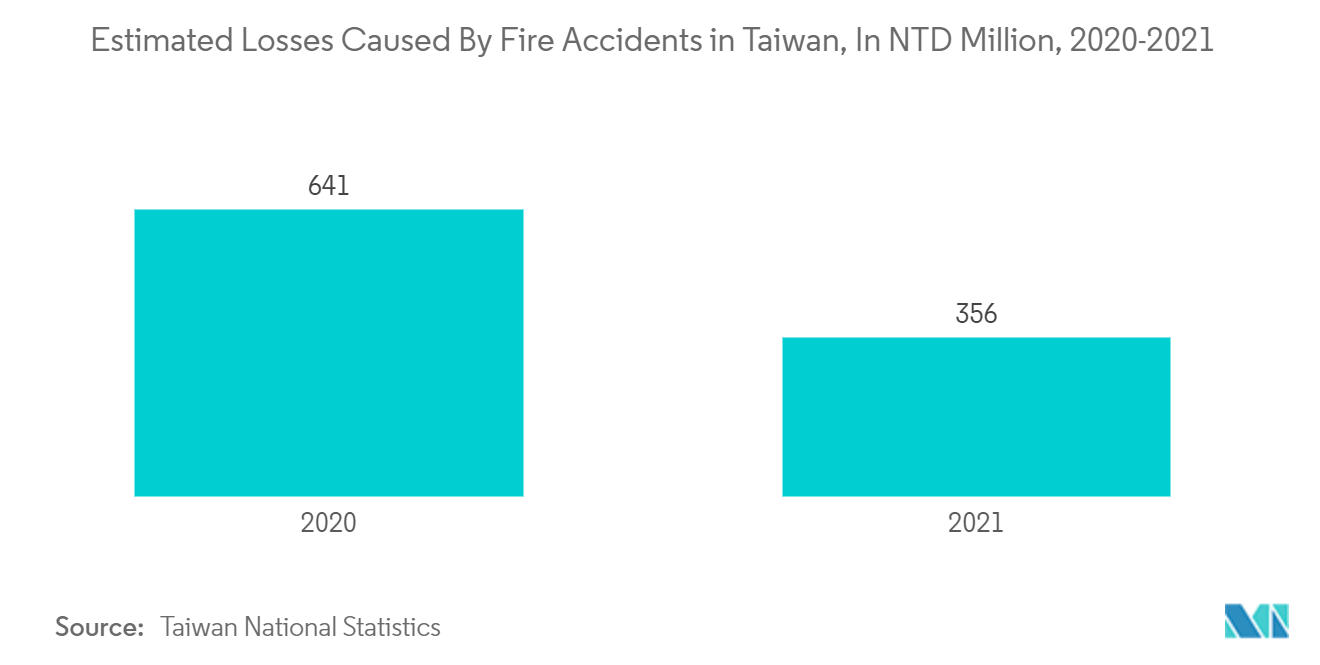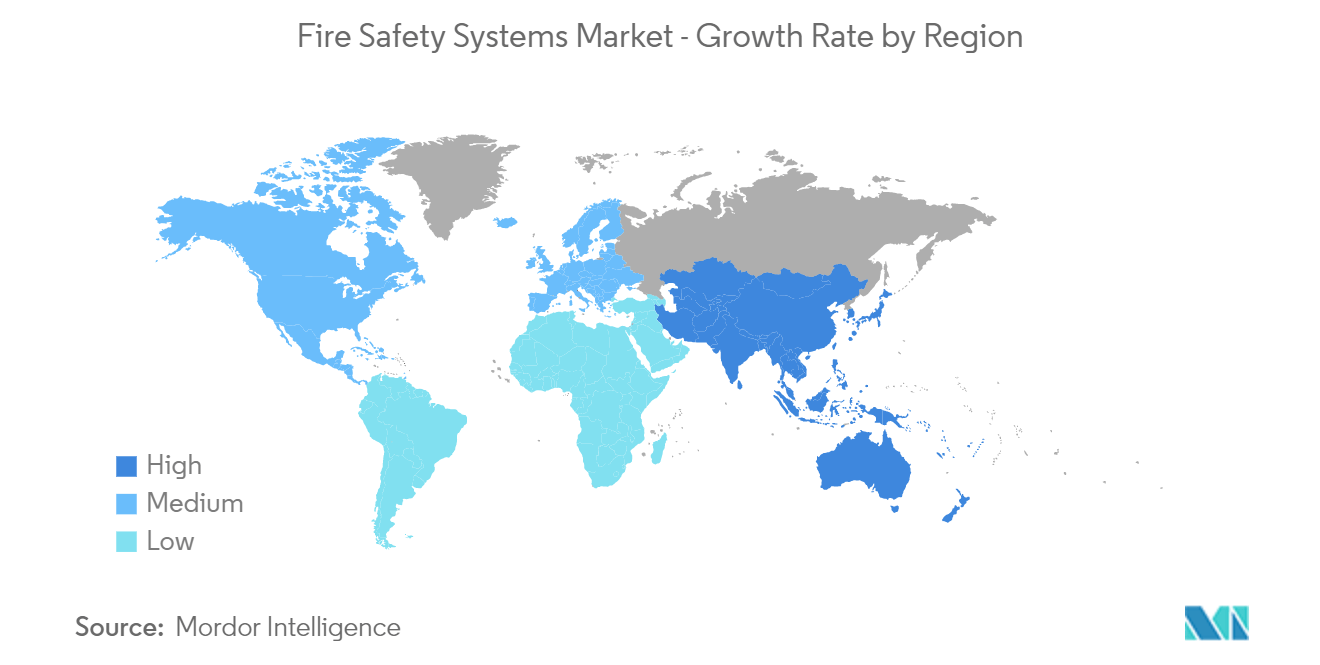Market Trends of Fire Safety Systems Industry
This section covers the major market trends shaping the Fire Safety Systems Market according to our research experts:
Commercial Segment To Hold Significant Market Share
- A national organization, namely OSHA (The United States Department of Labor Occupational Safety and Health Administration), set fire code requirements, particularly for United States businesses. OSHA has developed a set of regulations regarding the function of commercial fire alarm systems. The alarm must be loud enough to be heard over ambient noise and trigger an emergency response or action. Failure to meet the set standards will result in a costly citation or fine.
- OSHA also stated the importance of sprinkler systems, like how they can play an essential role in helping to put out newly erupting fires in a commercial building. OSHA requires that sprinkler systems be inspected and tested annually, and if found faulty must be replaced immediately. Such strict rules keep in check the fire safety systems of a commercial building.
- The National Fire Protection Act, European Norm, among several other local regulations, building codes, listings, and approvals by nationally recognized testing laboratories, has mandated the construction authorities to equip the infrastructures with adequate detection and fire suppression systems. Additionally, insurance companies provide incentives to infrastructure owners for installing such equipment, which is expected further to drive the growth of the fire safety equipment market.
- According to Taiwan National Statistics, in September 2022, estimated losses from fire accidents reached approximately USD 11 Million in Taiwan in 2021. To better protect densely populated China from fires, the government has been pushing the development and use of innovative firefighting solutions (both mobile and stationary) for years. This trend is also reflected in the many extinguishing robots sold in China.
- According to Road Transport Ministry, in January 2022, all new buses designed for plying on long-distance routes and school buses required fire detection and alarm systems in the passenger area. This was employed with a notification, making this provision mandatory. These school buses also needed to plan to suppress the fire so that passengers get enough time to deboard from the burning vehicle. Until now, it was mandatory to have the fire detection, alarm, and extinguishing system only in the engine compartment.

Asia-Pacific To Witness Significant Growth
- The Asia-Pacific is a developing region; countries like India and China are expected to drive the market's growth. Rapid urbanization and industrialization in emerging nations are expected to boost the demand for fire safety equipment. Furthermore, the strong presence of sensor manufacturing companies and a high fire safety equipment production level would contribute to the growth over the forecast period.
- In July 2021, the National Cultural Heritage Administration (NCHA) of China found several weaknesses in the fire control systems in China's cultural heritage sites. The inspector spotted more than 140 problems in over 60 cultural areas. The issues included electrical system safety hazards as they had old and damaged wires that increased the risk of short circuits and fire risks. To prevent similar fire accidents at other heritage sites, the Chinese government deployed firefighters and provided fire suppression systems, fostering the market growth.
- Expansion of the manufacturing industry and growing investments toward superior building technologies will drive the business outlook. Strict government measures and policies for creating a safe and healthy work environment are expected to fuel the business landscape. Also, article 13 of the Fire Protection Law of China mandates the use of protection systems in industrial, commercial, and residential buildings across the nation.
- India's overall economic growth and growing commercial sector and real estate industry further fuel the demand for fire and safety equipment. For instance, in February 2021, the Government Of India unveiled a scheme for setting up mega textile parks in the country as part of the Center's efforts to position India as a fully integrated, globally competitive manufacturing and exporting hub for the sector. Seven mega textile parks will be launched in three years as part of the scheme. Under the scheme for integrated textile parks, 59 textile parks have been sanctioned so far.


